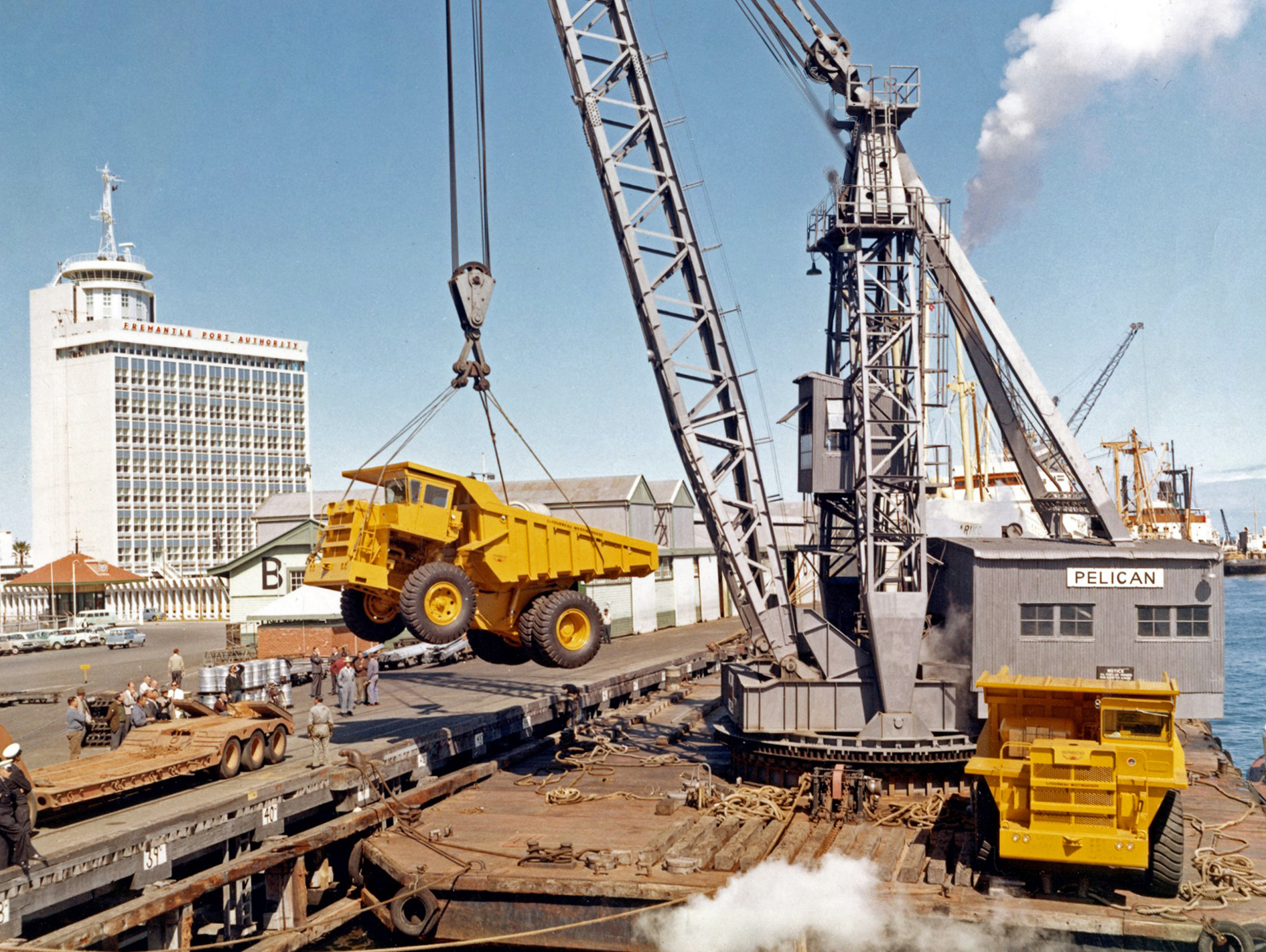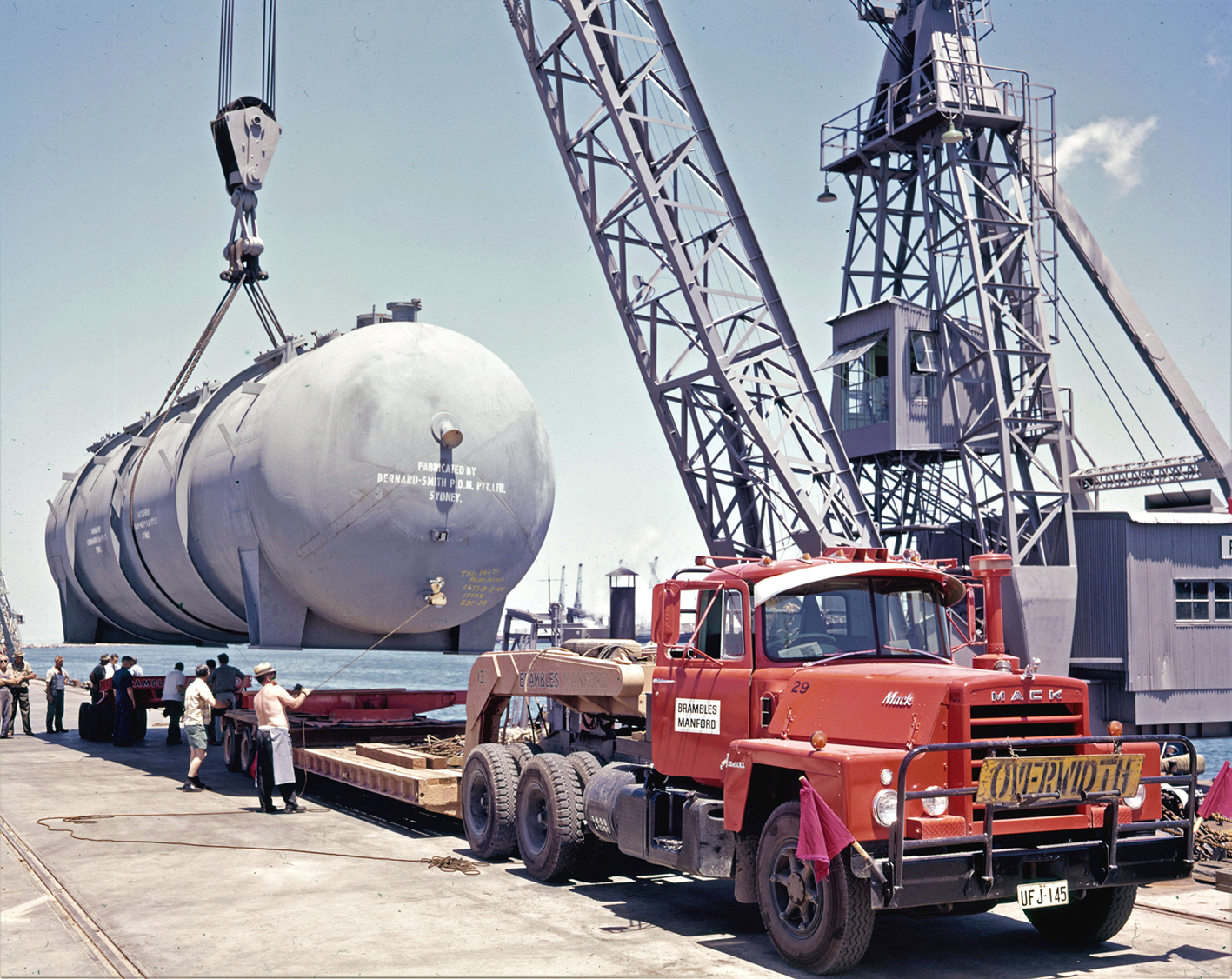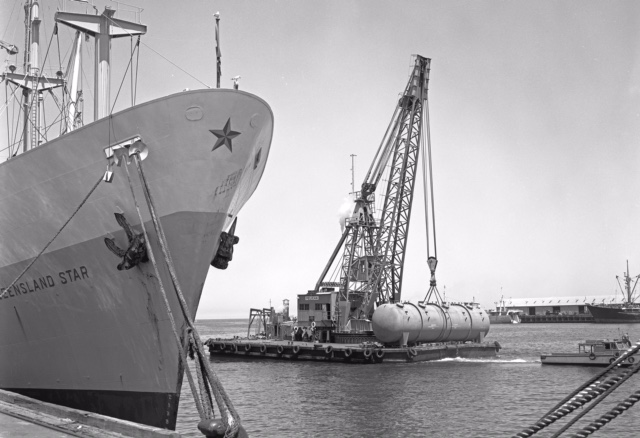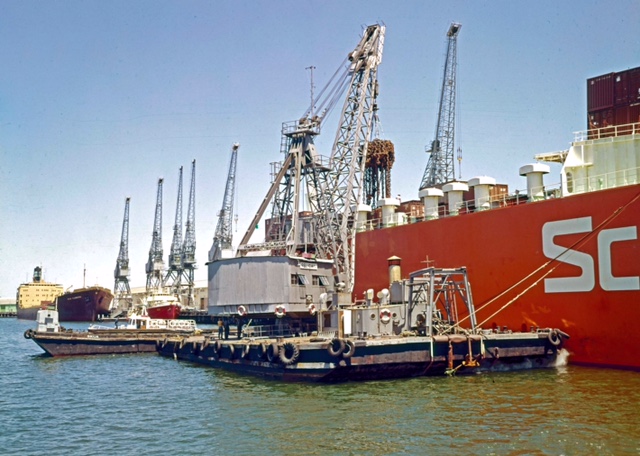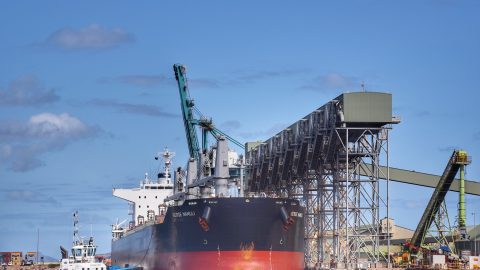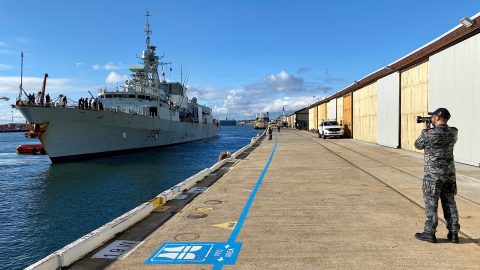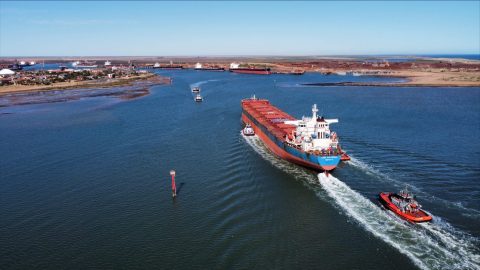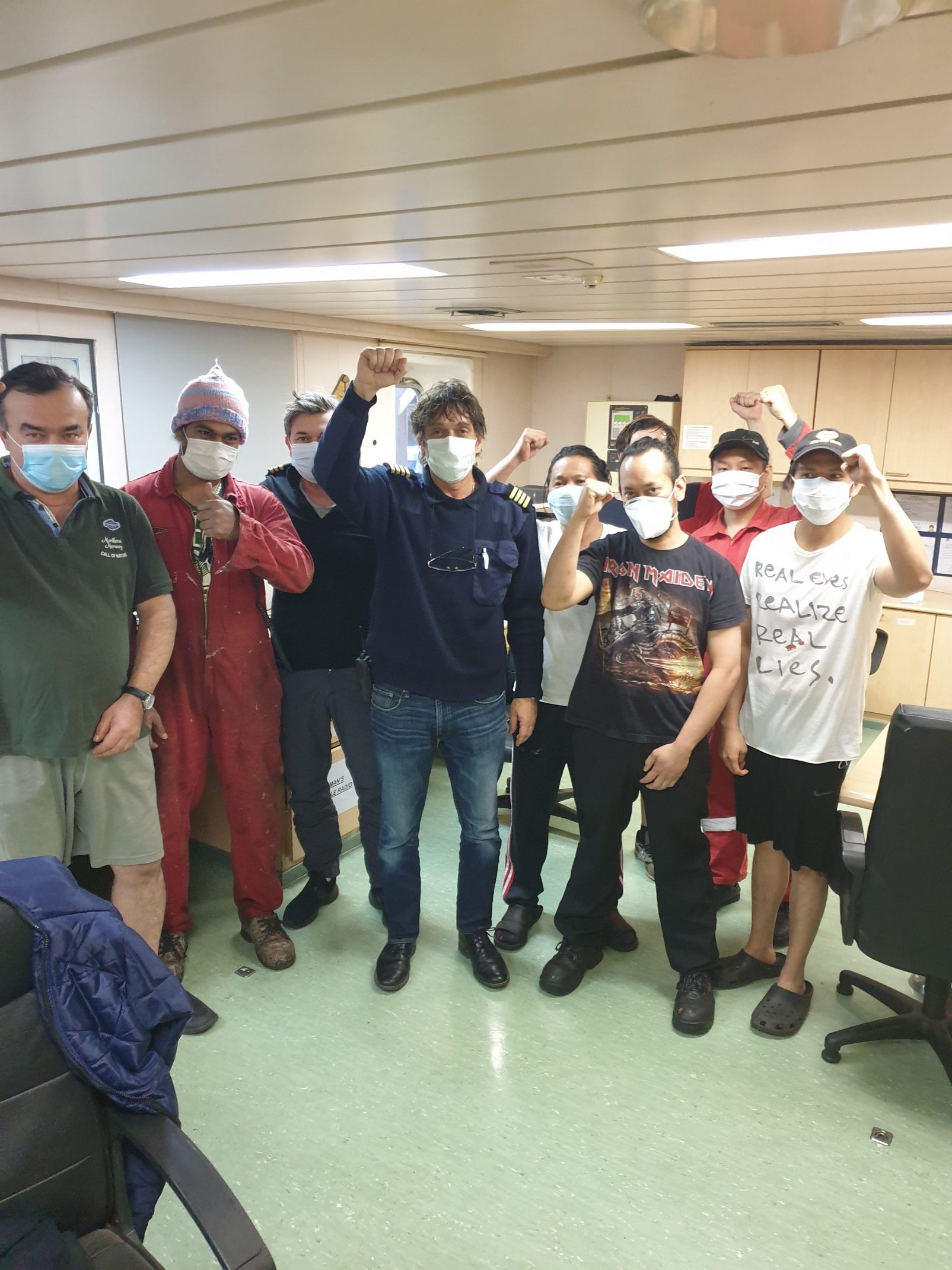The pelican is a bird not frequently seen in Fremantle’s Inner Harbour (though it happens occasionally), but this wasn’t always the case!
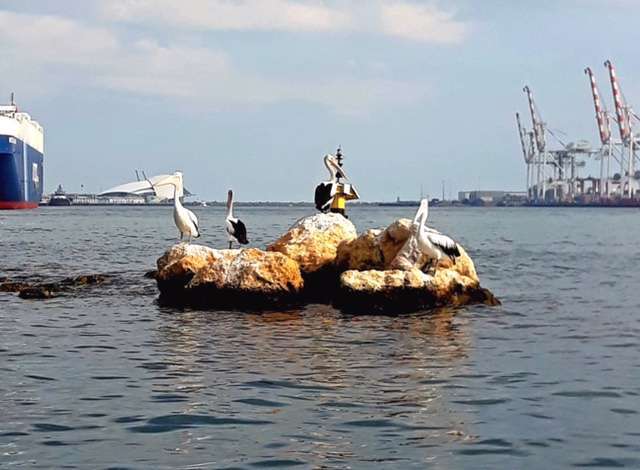
Between 1946 and the tailend of 1991, Fremantle Ports’ 80-tonne floating steam crane, Pelican, was a ubiquitous sight for Fremantle locals, moving steadily around the harbour to tie up alongside ships to load or unload heavy cargo, which the quay-side cranes were not able to handle. In those days, quayside cranes on Victoria Quay had a working limit of 3 tons and 7.5 tons on North Wharf. Similarly, ships with their own gear weren’t able to handle heavy-lift cargo.
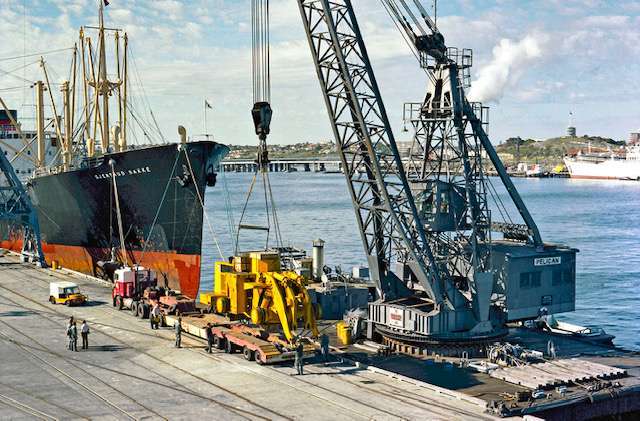
So, amidst the bustling comings and goings of all manner of cargo ships and glamorous passenger ships that slid in and out from F and G Berth at the Passenger Terminal, it was a time when the grey Pelican barge was, to Fremantle Port, the tortoise not the hare, the wallflower instead of the social butterfly!
Yet, everybody knew and recognised the Pelican, and it was certainly responsible for creating some spectacular sights because of its capabilities.
It’s little known that the Pelican had a sister-vessel – Silverwater III – which serviced the State Dockyard at Newcastle in New South Wales. The Commonwealth Government had ordered both in 1945, with the Pelican built here in WA, by Structural Engineering.
It was 120 feet long and 65 feet wide, with a draft of 11 ft 6 inches and a total displacement of 1014 tons. The crane jib reached more than 100 feet and was fully revolving. Proudly displayed near the top of its crane room was her lettered name, spelled plainly in black capitals on a white background. Nothing fancy about this vessel!
The Pelican’s deck was always a busy, but ordered, chaos of chains, ropes, fendering and all-important jarrah sleepers which were essential for settling cargo on, and chocking where required.
The crane was manned by a team of Port Authority workshop staff, including the crane driver who held a steam ticket, a rigger, a fitter and an electrician. Lifting operations were handled by both onboard and shoreside waterside labour. The floating crane was towed to and from the shipside to the wharf apron by Port Authority work boats and private operators, as required.
But it was what Pelican could do which people marvelled at. It was a common sight for a small crowd to gather on the docks to watch it delicately lift a Haulpak truck, tractors, locomotives, fishing vessels, endless varieties of heavy equipment or strange tanks destined for industrial locations somewhere around the State. The variety of heavy-lift cargo was endless.
Because it was steam operated, an impressive cloud of steam would punctuate the process and remind Fremantle residents and workers that Pelican was hard at work.
When not doing its job, Pelican would tie up in a range of spots around the harbour, but mostly at the eastern end of Victoria Quay, down near the bridges, out of the way.
Today, it’s hard to imagine why such a craft would need to be part of a working port but we should remember massive RO-ROs – Roll On – Roll Off ships – with lowerable ramps were but a dream back then. Today, RO-ROs slide into the port and, within hours, their stern ramps are lowered to a strengthened wharf deck and heavy loads either driven off (if possible) or towed ashore on low-profile MAFI trailers.
Even in 2023, most heavy equipment and machinery destined for the Pilbara, Goldfields and other parts of the State still come through Fremantle’s Inner Harbour at either H Berth at the eastern end of Victoria Quay, or Berths 11 and 12 on North Quay nearest the rail line.

Shortly after being decommissioned in 1991, Pelican was pressed back into service to dismantle the centre finger jetty at the small craft pens near the railway bridge, after some of the port’s boats were sold.
In May 1992, the tug Bob Talgo towed Pelican into Rous Head Harbour for lay-up. By February 1994 the crane was declared unsafe for a long tow. Pelican was taken to the 2,000-ton South Slipway at Victoria Quay in February 1996, where the crane was dismantled and removed off the barge.
But her life still wasn’t over. In April 1996, Pelican was towed into the Fishing Boat Harbour where welders sealed her decking. Now a flat-top barge, she was then towed to Dampier in June of that year by the tug Misclyn Achiever, to undertake works.
In March 1999, Pelican returned to Fremantle with the tug Krisna and was positioned at 2 Berth North Quay where she loaded limestone rock for the artificial reef off Cottesloe. Remember that State Government project?
Finally, on 23 July 1999, Pelican, towed by the tug Southern Salvor, departed Fremantle for Onslow and was never to return.
Thankfully, Fremantle Ports’ archival photo collection has many images of Pelican at work, including the ones above, and a wonderful thing about them is they also display a timeline of fondly remembered ships that Pelican serviced.
Pelican may not have been beautiful, but she was ours and played a crucial role in the development of Western Australia.
* By Neil Stanbury, Manager Government and Public Relations, Fremantle Ports
WHILE YOU’RE HERE –
PLEASE HELP US TO GROW FREMANTLE SHIPPING NEWS
FSN is a reader-supported, volunteer-assisted online magazine all about Fremantle. Thanks for helping to keep FSN keeping on!
** Don’t forget to SUBSCRIBE to receive your free copy of The Weekly Edition of the Shipping News each Friday!
